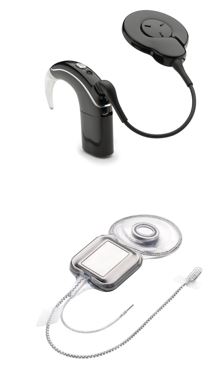
Cochlear Implants: Cochlear implants are designed for individuals with sensorineural hearing loss where the cochlear nerve is still functional. These devices bypass damaged parts of the inner ear and directly stimulate the cochlear nerve to provide auditory signals to the brain. Cochlear implant surgery is a well-established procedure often performed at specialized cochlear implant centers.
Auditory Brainstem Implants: Auditory brainstem implants are typically used for patients who cannot benefit from cochlear implants due to the absence or damage of the cochlear nerve, such as in cases of neurofibromatosis type 2 or auditory nerve aplasia. ABIs bypass the cochlear nerve entirely and directly stimulate the brainstem to create auditory sensations. This makes them a viable option for patients with severe hearing loss who are not candidates for cochlear implants.
Hearing Aids vs Implants: Unlike hearing aids, which amplify sound, both ABIs and CIs provide electrical stimulation to the auditory pathway, offering a more profound solution for those with significant hearing impairments.
This article delves into the case of Jessica Toews, a patient who uniquely benefited from both an auditory brainstem implant and a cochlear implant, showcasing how these technologies can work together to enhance auditory performance.
